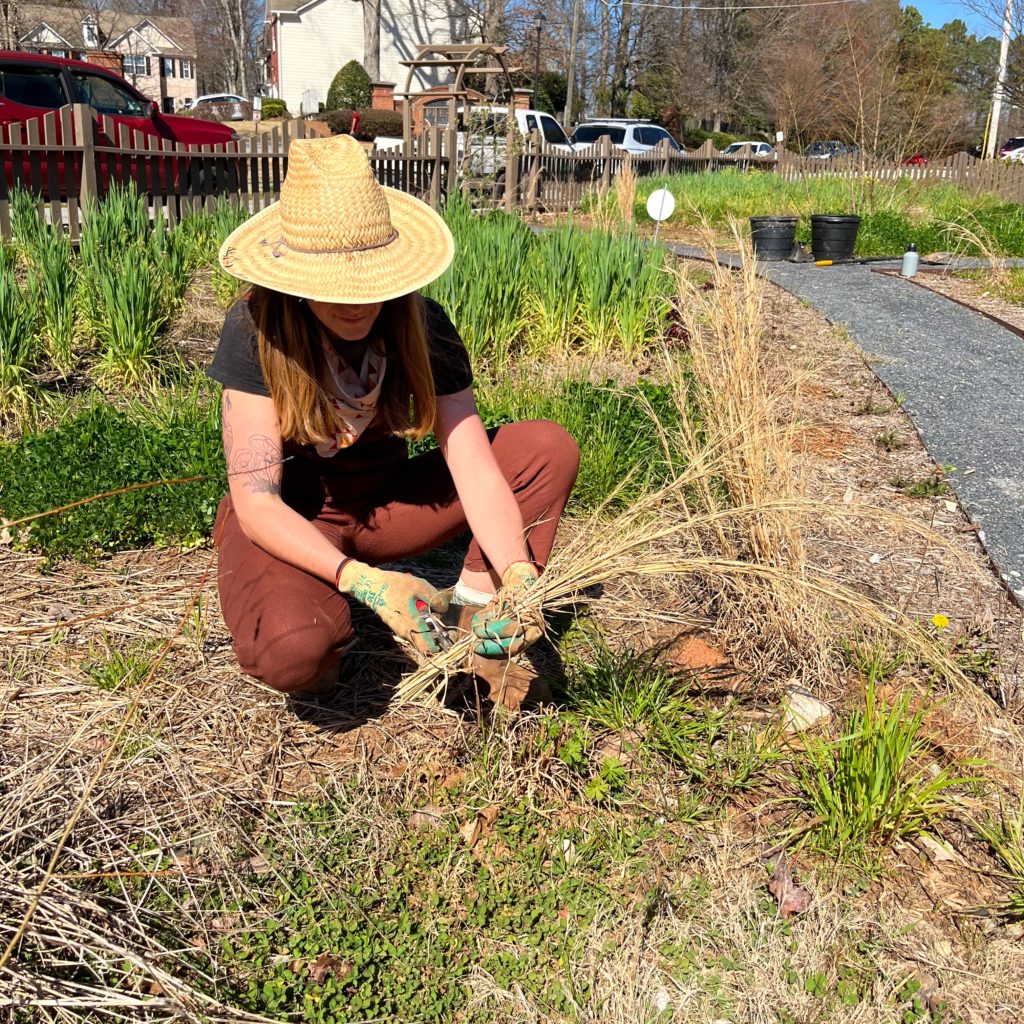
Shades of Green Permaculture Caretaking Manager Roxy Drew employs the ecologically minded “chop and drop” style of meadow management at a municipal community garden site in Clarkston, GA.
Establishing and maintaining meadows and meadow-like spaces is a wonderful, low-management way to create stunning visual interest and bolster biodiversity within your landscape. As one of the most imperiled types of ecosystems, they also provide critically important food and habitat for countless species. But, although easy to maintain, proper timing and technique is everything. And conventional seasonal landscape maintenance can often prove counterproductive with consideration to ecological goals and optimum meadow maintenance.
As a general rule of thumb we begin our primary management of meadows and meadow species in the spring when daytime temperatures consistently start to reach 50-70 degrees. Prior to that point we allow seed and flower heads and stalks to persist throughout the fall and winter to provide important food and shelter for a variety of creatures. By contrast, conventional landscape maintenance programs typically call for ‘clean up’ in the fall, which includes cutting back grasses and perennials and removing plant material trimmings from the site. This not only eliminates habitat, food and nesting material for a wide array of beneficial birds, insects, mammals, amphibians, reptiles and more, but inhibits seed dispersal and counteracts building healthy soil by removing debris and organic material that would otherwise assist with maintaining soil moisture, fertility and continued growth and germination.
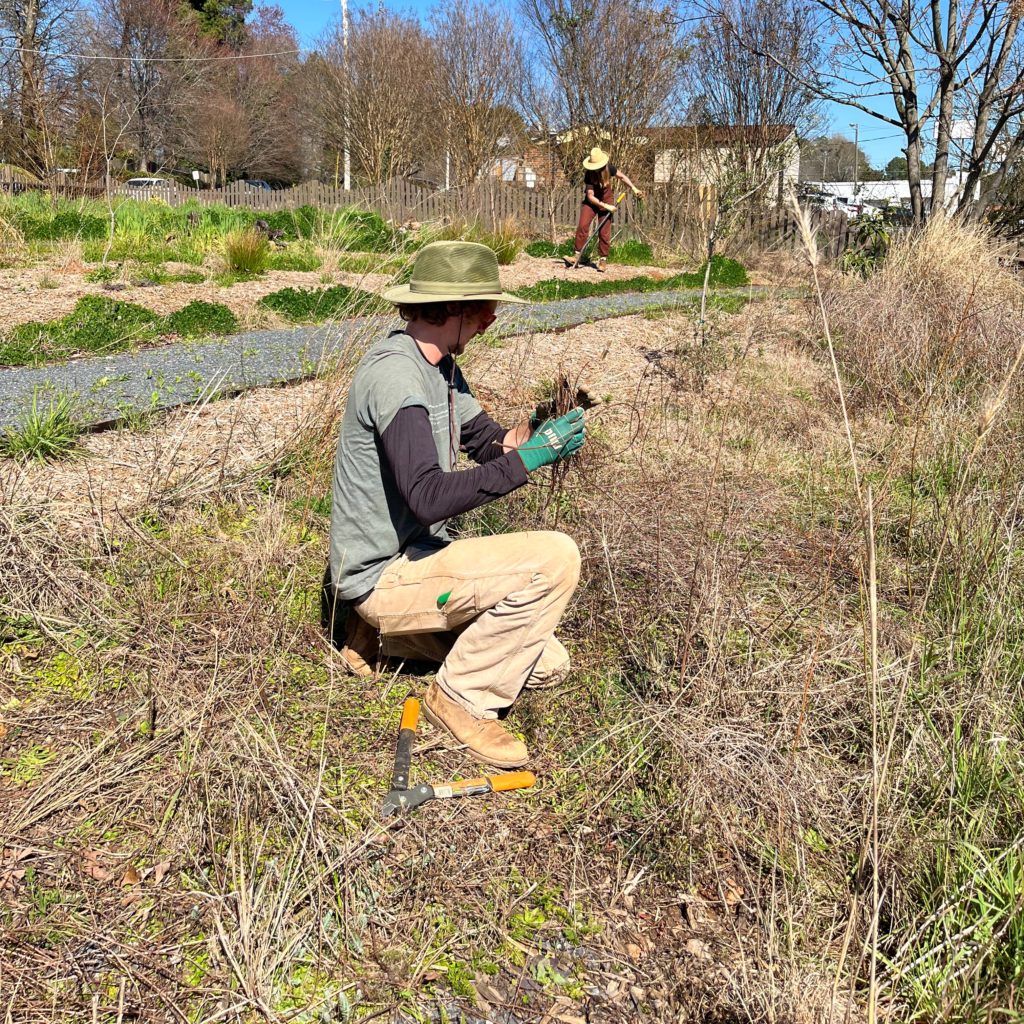
Seasonal meadow management begins when daytime temperatures start to range between 50-70 degrees consistently.
Instead, the program we use with our Caretaking clients (and that we recommend for folks that maintain their own landscapes) involves a primary maintenance sweep in March. At this time we begin to cut back residential and municipal meadows and meadow species throughout the landscape. We use the “chop and drop” method, by which we cut stalks and stems about 3-5” off the ground and into 3-5” segments. We then allow this thatch to fall to the ground as we go to provide continued habitat for insects and organic material for decomposition in order to return nutrients to the soil. As we progress through the meadow area, we simultaneously assist with seeding by crumbling seed heads along the way—the thatch that falls to the ground also assists with holding seeds in place on the ground.
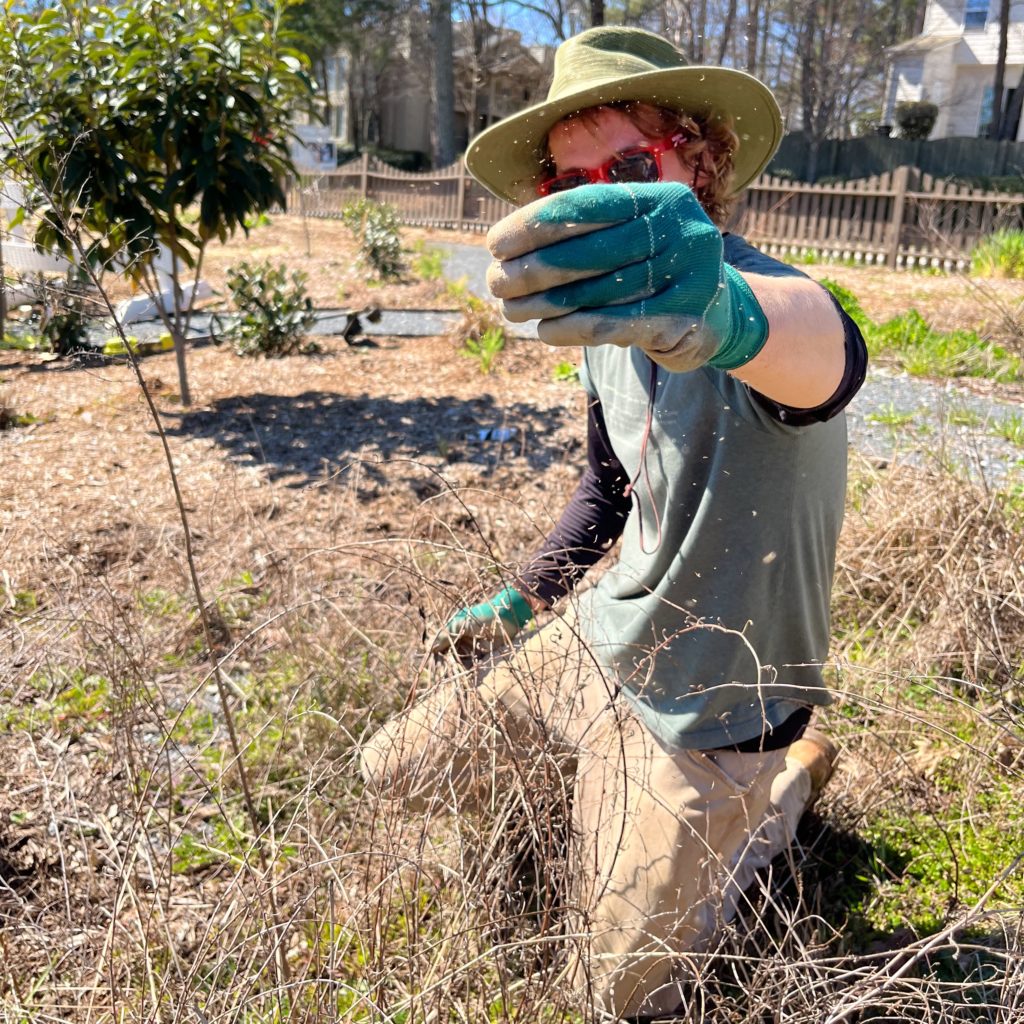
Shades of Green Permaculture Assistant Caretaking Manager Alexander Bale helps disperse seeds of meadow species while cutting plants back for the season.
In addition to providing the species within your meadow space with the maintenance they need, this is also the perfect time to sow seeds and add new plants into the mix. Spring is the perfect time to plant new grasses like muhly, blue stem, blue grama, switchgrass species and more. If your meadow is in a consistently moist area, species like common rush, lobelia and river oats work exceptionally well.
As you establish or expand a meadow, planning with maintenance requirements in mind can come in handy. For us, that means thinking in layers and grouping like-species with like-species for easy management. Grasses, forbs, herbaceous annuals and perennials, bulbs and woody-stemmed species all work wonderfully in meadows, but grouping them strategically in clumps according to maintenance needs and style will make tending your meadow all the more efficient. Maintenance-wise and visually, we like to organize layers and matrices by species and order of succession—groundcovers and lower-lying plants (heuchera, golden ragwort, field pussytoes and prairie smoke are some of our favorites), grasses and self-seeding pollinator species come first, then bulbs, then woody stemmed perennials and shrubs.
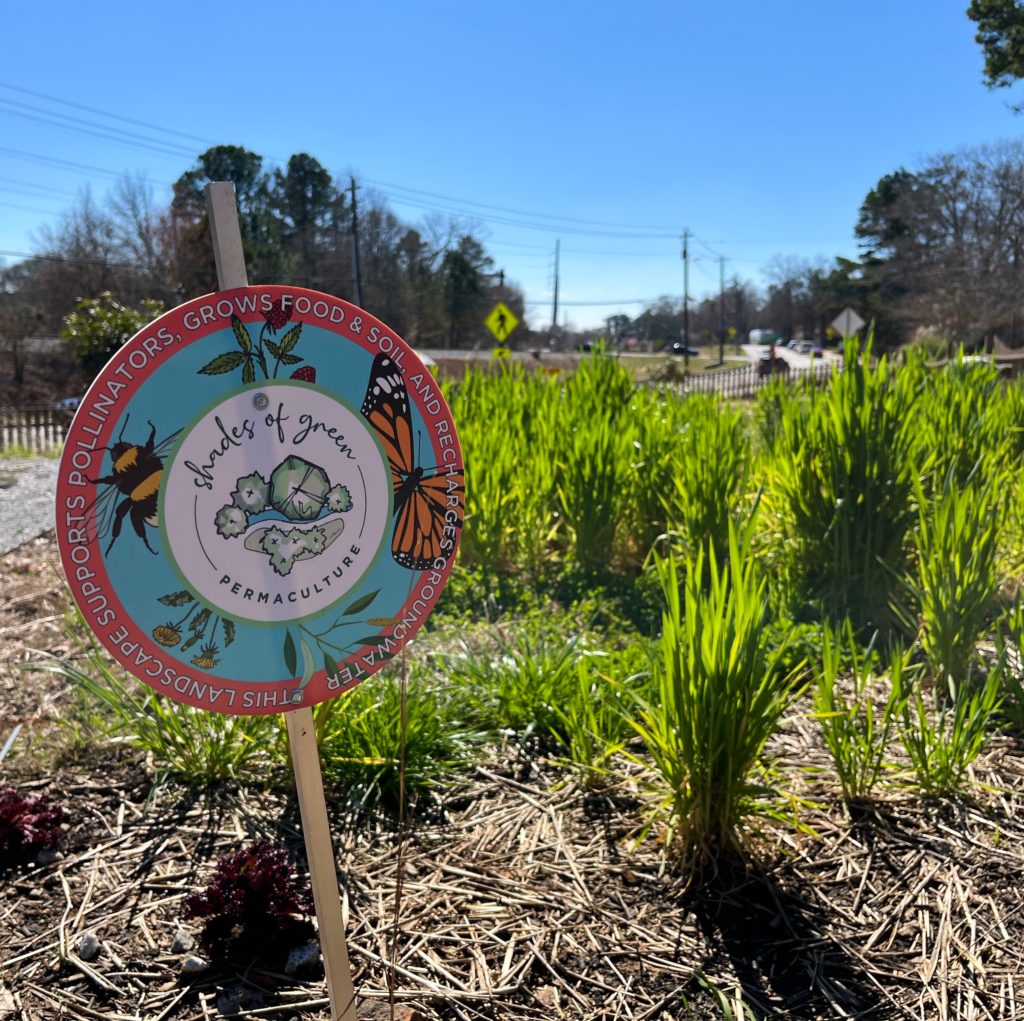
Meadows play a crucial part in maintaining biodiversity and ecosystem health. If you’re looking to reduce the size of your lawn or add an easy-maintenance element full of visual interest to your landscape, consider converting some of your space into a meadow that you, your family and wildlife can enjoy year-round! Need some assistance? Our Caretaking crew would love to help! Shoot us an email at info@shadesofgreenpermaculture.com for more info or tune in to our live monthly Caretaking chats on Instagram @shades_of_green_permaculture to ask your questions starting Friday, March 25 at 12 p.m.
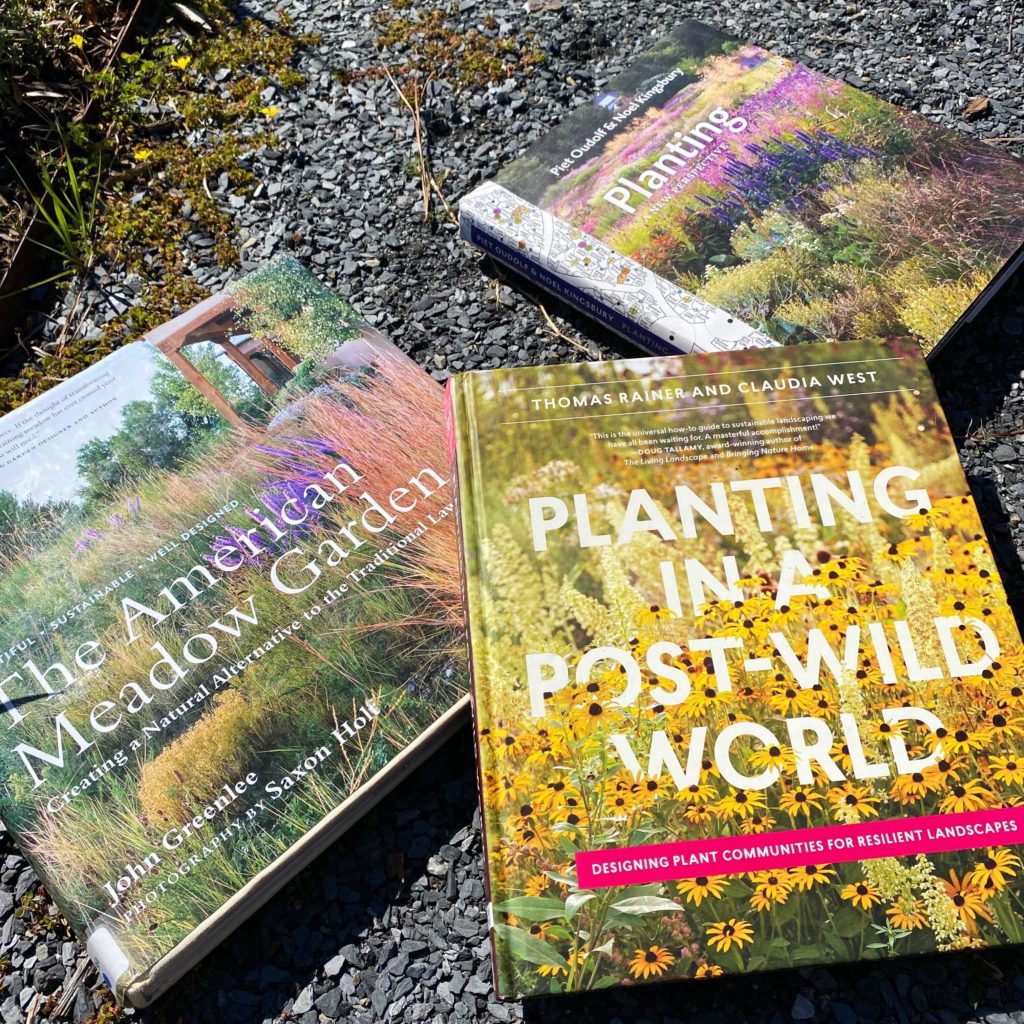
Some of our Caretaking team’s favorite books on establishing and maintaining meadows.